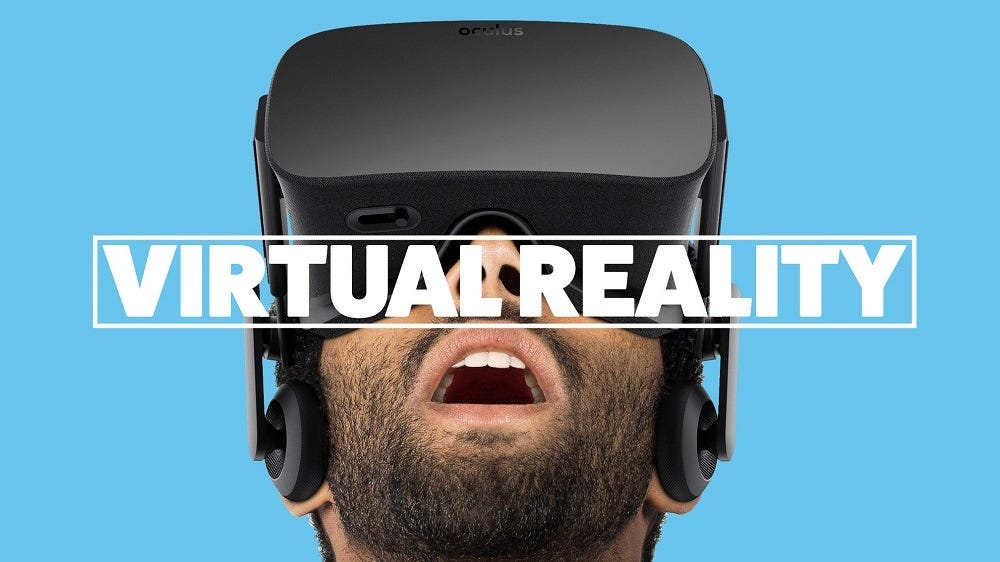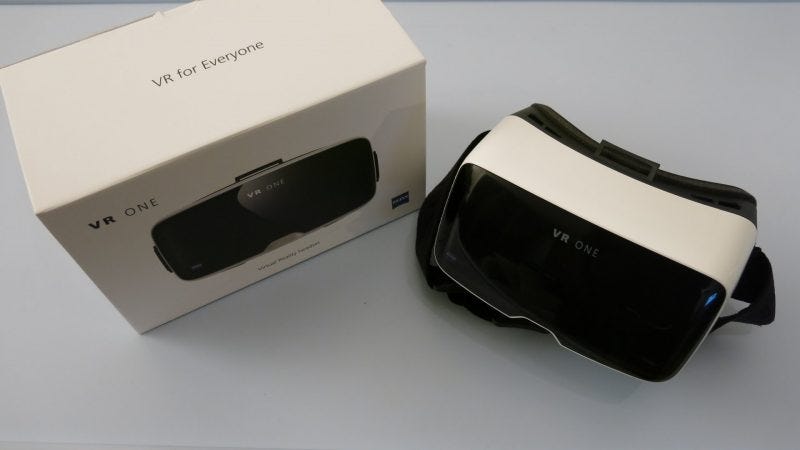Top 7 Most Promising Virtual Reality headsets of 2016
Click to read the full story: Top 7 Most Promising Virtual Reality headsets of 2016

Virtual Reality is now in full swing with the recent consumer releases of the long-anticipated Oculus Rift and HTC Vive. There are also plenty of other smartphone-based headsets out there such as the Samsung Gear VR and Google cardboard clones. But which ones promise to change the entertainment landscape and push VR further into the mainstream? Here’s a rundown of available and soon-to-be-released VR gear.

Oculus Rift – is the one that virtually rebooted interest in virtual reality. This simple KickStarter project quickly became an overnight sensation with nothing less than Facebook to back it up. This is also the most anticipated VR headset due to the tons of PR it gained from amazing Youtube videos of app developers. The Oculus Rift has a hefty price tag, though. The cost of delivering a top-notch VR experience ballooned from the promised 399 dollars to 599. It doesn’t count the 1000+ dollar gaming rig required to run it. But hardcore gamers and early adopters probably won’t mind the cost to see what the fuss is about. Oculus founder Palmer Lucky himself delivered a unit to the first lucky KickStarter backer. He also said that Mac users are unfortunately out of luck because even the newest Mac won’t be able to handle the graphical demands of the headset. The package includes the headset, integrated headphones, and an Xbox One controller.

HTC Vive – another highly anticipated unit is the HTC Vive. Like the Oculus Rift, a powerful PC is also required to use it. Unlike other VR systems, the HTC Vive allows some movement through wall-mounted laser sensors that work with the multiple sensors on the headset. Unlike the Oculus Rift, users need to use separate headphones, but it gives users an advantage to use top-of-the-line earphones if they have one. The HTC Vive is so far the most expensive but promising VR headset of the bunch costing 799 US dollars but unlike the Oculus Rift, the Vive already comes with motion controllers.

Samsung Gear VR – The Samsung Gear VR has been around since November 2015. It uses a different approach to VR than the Oculus Rift and HTC Vive. The Gear VR makes use of compatible Samsung smartphones such as the Galaxy Note 4, Note 5, Galaxy S6, S6 Edge, S7 and S7 Edge. The phones are inserted into the headset itself and connected to the headset via micro USB. To interact with whatever app is in play, the headset has a track pad on one side and a back button above it. There are over 185 various apps available for the device as of February 2016 which include games, Netflix viewing and 360-degree photo viewing. The Samsung Gear VR is fairly inexpensive at $99. No problem for owners of the aforementioned smartphones but those who want to get the Gear VR will have to get the expensive phones or get them cheaply from eBay.

Playstation VR – formerly called Project Morpheus is Sony’s contribution to the VR trend. As the name says, it’s designed for use for the PlayStation 4 and a PlayStation 4.5 is currently being developed to further take advantage of the PlayStation VR and higher resolution TV sets. The PlayStation VR, unfortunately, won’t be out until October but good news to PlayStation 4 owners, the device will only cost 399 dollars. The bad news is that PS4 owners will need a PlayStation Camera for the console to track head movements up to 360 degrees and PlayStation Move controllers for some games. Sony promises 50 games by launch time so buyers would have to shell out for those too. While waiting, PS4 owners could get into VR via Google Cardboard or any of its more sturdy clones.
LG 360 VR – like the Samsung Gear VR, the LG 360 VR is powered by a smartphone. But unlike the Gear VR and Google Cardboard, the smartphone stays out of the headset making it lighter. The LG 360 VR requires a connection to the user’s LG G5 smartphone and most likely future LG flagship handsets via USB-C. Interacting with the VR app is done through an OK and Back button on the headset. It doesn’t have integrated headphones which gives users the option of choosing their headphones.

Google Cardboard – is the cheapest way for people to get into VR. Google Cardboard kits are available for as little as 5 dollars. Google Cardboard clones sell for as much as 30 dollars with some additional features or even for free like the McDonald’s Happy Meal box in Sweden. Like the Samsung Gear VR, Google cardboard makes use of a smartphone inserted into the headset. The phone requires a compass sensor as the control method will be done through magnetic buttons. Unlike the Gear VR, Google Cardboard, and its clones can make use of any large screen Android phones. There are already plenty of apps available at the Google Play for users to play around with VR.

Zeiss VR One – What about the iPhone? There are already plenty of VR viewers for the iPhone too. Apple is currently working on its own VR gear but may not be ready until next year. Until then Apple users can use other Google Cardboard-like viewers on the market, each with their respective VR apps and content such as the Zeiss VR One and One GX. The Zeiss VR One can support the iPhone 6, Samsung Galaxy 6S, Sony Xperia Z5 and other similar sized phones. The Zeiss VR One is priced at $129 with plenty of apps already available. For the price, the device looks very classy.
VR Technology has really matured with better graphics and control than in the crazy 90s and unlike then, it’s now much easier to get into the new craze. All a user needs is a smartphone and as little as five dollars. While true immersive VR provided by the Oculus Rift and HTC Vive may hurt the wallet, the technology doesn’t hurt the vault, and the costs might taper out in due time. Whichever headset you purchase, 2016 is certainly the year of Virtual Reality.
The post Top 7 Most Promising Virtual Reality headsets of 2016 appeared first on Movie TV Tech Geeks News By: Marius Manuella


